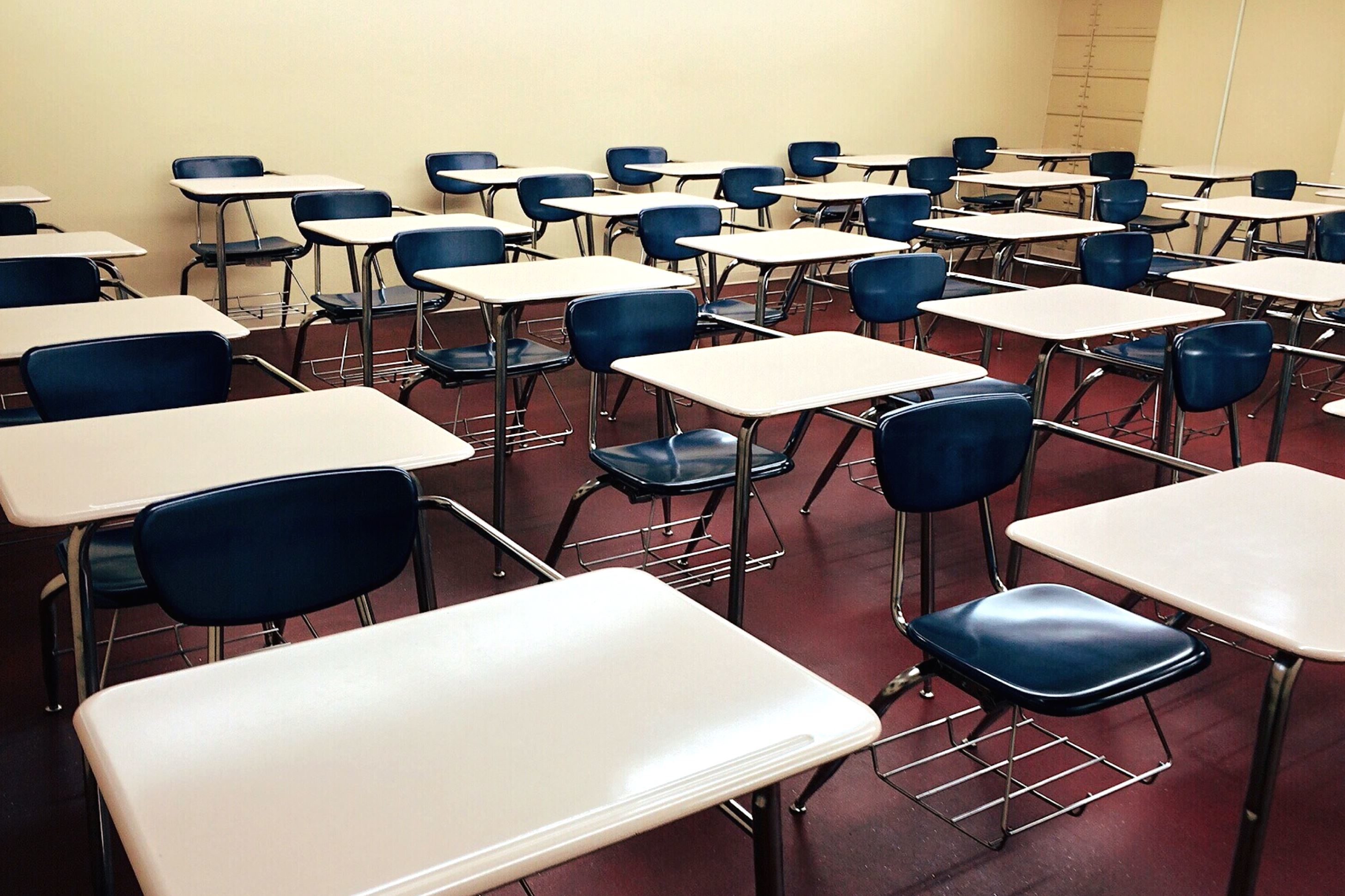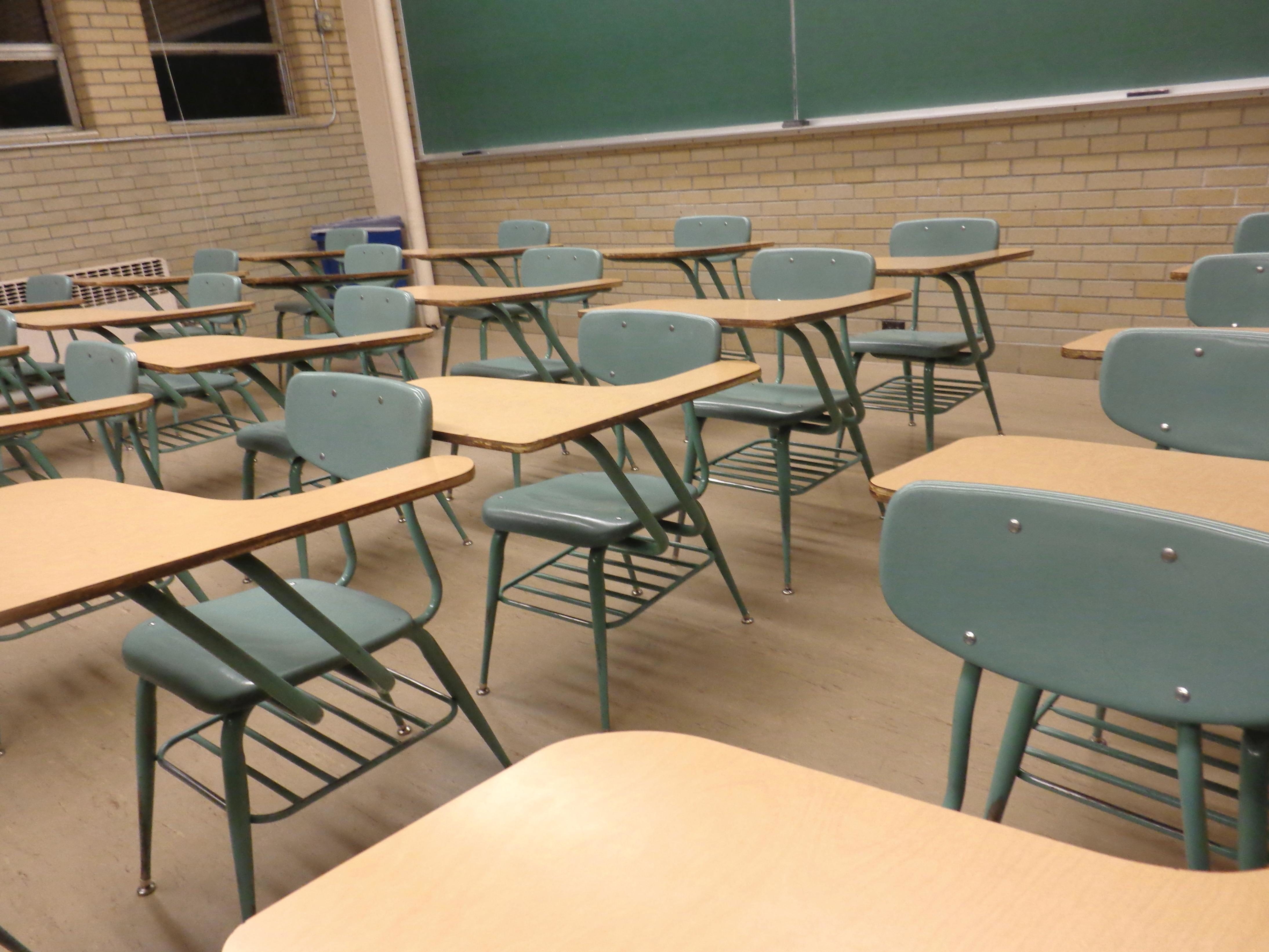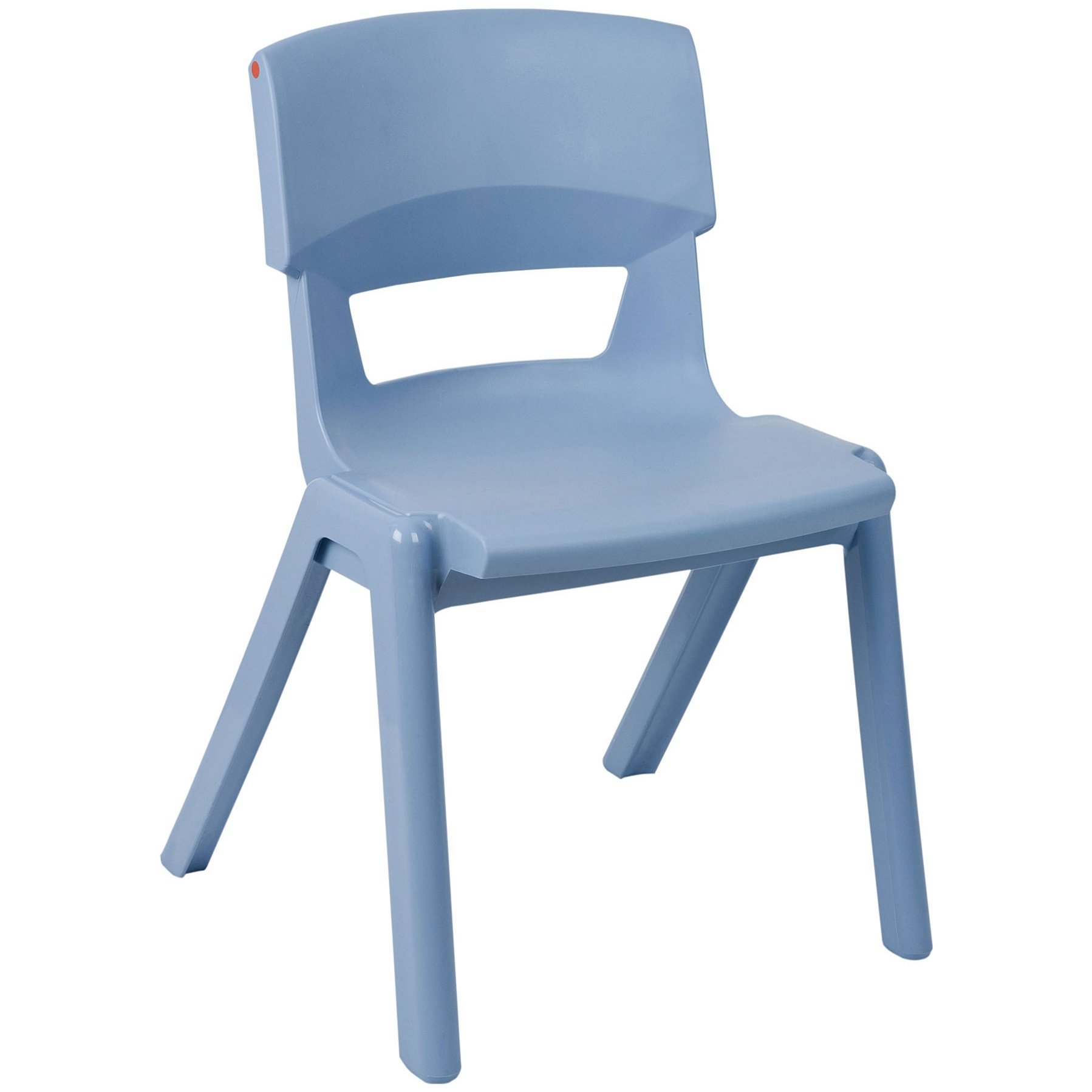The Evolution of Classroom Furniture: Classroom Student Desk Chair

Classroom furniture has undergone a significant transformation throughout history, reflecting evolving pedagogical theories and educational trends. From the rigid and inflexible designs of the past to the modern, adaptable, and student-centric approaches of today, the evolution of classroom furniture has played a crucial role in shaping the learning environment.
Traditional Classroom Desks and Chairs
Traditional classroom desks and chairs, prevalent in the early 20th century, were designed with a focus on order and discipline. These desks were often fixed to the floor, arranged in rows, and characterized by a rigid and unchanging configuration.
The traditional classroom setup was often referred to as the “teacher-centered” model, with the teacher at the front of the classroom and students passively receiving information.
The desks themselves were typically made of wood, often with a simple and utilitarian design. They were designed to be durable and withstand the rigors of daily use, but they lacked the flexibility and adaptability of modern designs.
Modern Classroom Furniture
Modern classroom furniture has moved away from the rigid and fixed designs of the past. Modern classrooms are characterized by a more flexible and adaptable approach, with furniture designed to facilitate collaboration, active learning, and student-centered instruction.
Modern classroom furniture often features a variety of configurations, including tables, chairs, couches, and even beanbags, to create a more dynamic and stimulating learning environment.
Modern designs often incorporate features such as adjustable heights, wheels, and modular components to allow for easy rearrangement and adaptation to different learning activities. The focus is on creating a learning environment that is both comfortable and conducive to active engagement.
Influence of Pedagogical Theories
The evolution of classroom furniture has been heavily influenced by pedagogical theories. The shift from teacher-centered to student-centered learning has led to the development of furniture designs that promote collaboration, active participation, and flexible learning spaces.
The constructivist approach to learning, which emphasizes the active role of students in constructing their own knowledge, has played a significant role in the evolution of classroom furniture.
Modern classroom furniture designs often incorporate features that encourage movement, collaboration, and individual learning styles. For example, movable desks and tables allow for easy rearrangement to create small group workspaces or individual study areas.
Educational Trends
Educational trends have also played a role in the evolution of classroom furniture. The increasing use of technology in the classroom has led to the development of furniture that incorporates technology integration.
Smart desks, equipped with built-in charging stations and wireless connectivity, are becoming increasingly common in modern classrooms.
Other educational trends, such as the emphasis on project-based learning and personalized learning, have also influenced furniture design. For example, furniture that provides flexible workspaces and supports different learning styles is becoming more prevalent.
Ergonomics and Student Well-being

In the ever-evolving landscape of education, the importance of student well-being has taken center stage. A crucial aspect of fostering a conducive learning environment is the design of classroom furniture, particularly desks and chairs. Ergonomics, the science of designing and arranging things to optimize human well-being and overall performance, plays a pivotal role in creating a learning space that supports both physical and cognitive development.
The Importance of Ergonomic Design in Student Desks and Chairs
Ergonomic design in student desks and chairs goes beyond mere aesthetics; it focuses on creating furniture that promotes proper posture, reduces discomfort, and enhances student health and learning outcomes. The impact of poorly designed furniture on students can be significant, leading to musculoskeletal pain, fatigue, and even decreased concentration and academic performance.
Key Ergonomic Factors to Consider
Ergonomic design principles encompass a range of factors that contribute to the overall comfort and functionality of student desks and chairs. These factors include:
Adjustability
- Height adjustability allows students of different heights to find a comfortable and supportive seating position. This reduces strain on the back, neck, and shoulders, promoting good posture and minimizing discomfort.
- Seat depth adjustment ensures that the seat is neither too short nor too long, providing proper support for the thighs and preventing pressure on the back of the knees.
- Backrest adjustability allows students to customize the angle and height of the backrest to support their spine and provide optimal comfort.
Posture Support
- A well-designed backrest should provide lumbar support, promoting a natural curvature of the spine and reducing the risk of back pain. The backrest should also be contoured to fit the shape of the student’s back, offering optimal comfort and support.
- Armrests, when included, should be adjustable in height and width to provide comfortable support for the arms and reduce strain on the shoulders and neck.
Comfort
- The seat material should be breathable and supportive, providing adequate cushioning and preventing discomfort. The seat should also be wide enough to accommodate the student’s hips and thighs comfortably.
- The chair’s base should be stable and provide a smooth swivel function, allowing students to easily turn and reach for items on their desks. The base should also be equipped with casters for easy mobility.
Research Findings on the Impact of Ergonomic Furniture
Numerous research studies have demonstrated the positive impact of ergonomic furniture on student health, posture, and learning outcomes.
Impact on Student Health
- Studies have shown that students using ergonomically designed desks and chairs experience reduced incidence of musculoskeletal pain, including back pain, neck pain, and shoulder pain. This is attributed to the furniture’s ability to promote proper posture and reduce strain on the body.
- Ergonomic furniture can also contribute to improved blood circulation and reduced fatigue. This is due to the increased comfort and support provided by the furniture, allowing students to sit comfortably for extended periods without experiencing discomfort or pain.
Impact on Student Posture
- Research indicates that students using ergonomically designed furniture exhibit better posture, with improved spinal alignment and reduced slouching. This is achieved through the furniture’s ability to provide proper support for the back, neck, and shoulders, encouraging students to sit upright and maintain a healthy posture.
- Good posture not only reduces the risk of musculoskeletal pain but also improves breathing and digestion, contributing to overall well-being.
Impact on Learning Outcomes
- Studies have shown a correlation between ergonomic furniture and improved academic performance. This is attributed to the furniture’s ability to enhance student comfort and reduce discomfort, leading to increased focus, concentration, and engagement in learning activities.
- By promoting a comfortable and supportive learning environment, ergonomic furniture can reduce distractions and enable students to better focus on their studies.
Classroom Design and Layout

The arrangement of student desks and chairs is a crucial element in creating an effective classroom environment. It influences student interaction, learning dynamics, and overall classroom flow.
Classroom Layout Options and Suitability, Classroom student desk chair
Different classroom layouts are suited for various teaching styles and activities. Here is a table showcasing some common layouts and their suitability:
| Layout | Description | Suitable for |
|---|---|---|
| Traditional Rows | Desks arranged in straight rows facing the front of the classroom. | Lecture-style teaching, independent work, assessments. |
| U-Shape | Desks arranged in a U-shape, with the teacher at the open end. | Small group discussions, presentations, interactive activities. |
| Circle/Round Table | Desks arranged in a circle or around a round table. | Collaborative learning, brainstorming, group projects. |
| Horseshoe | Desks arranged in a horseshoe shape, with the teacher at the open end. | Discussions, presentations, small group activities. |
| Cluster/Small Groups | Desks grouped in small clusters of 4-6 students. | Collaborative learning, group projects, problem-solving activities. |
Classroom Layout Design
Consider a classroom layout with a combination of different configurations:
– Front of the classroom: Traditional rows for lectures and presentations, with a large whiteboard or projector screen for visual aids.
– Center of the classroom: A U-shaped arrangement for discussions and interactive activities, with a flexible space for small group work.
– Back of the classroom: A cluster of desks for collaborative projects and independent study, with access to bookshelves and learning resources.
This layout provides flexibility for different teaching styles and activities, encouraging both individual and collaborative learning. The combination of traditional and innovative configurations fosters a dynamic and engaging learning environment.
Classroom student desk chairs are often overlooked, but they play a crucial role in student comfort and posture. Finding the best height for desk chair is essential, just like it is for adults, as it helps ensure proper alignment and reduces strain.
When students are comfortable, they can focus better and learn more effectively.
Classroom student desk chairs are designed for comfort and durability, but when it comes to home office setups, the focus shifts towards aesthetics and space optimization. A small desk chair white can be a perfect solution, offering a minimalist look and a compact footprint, ideal for smaller spaces.
While classroom chairs are built for communal use, these smaller white chairs can create a more personalized and stylish home office environment.